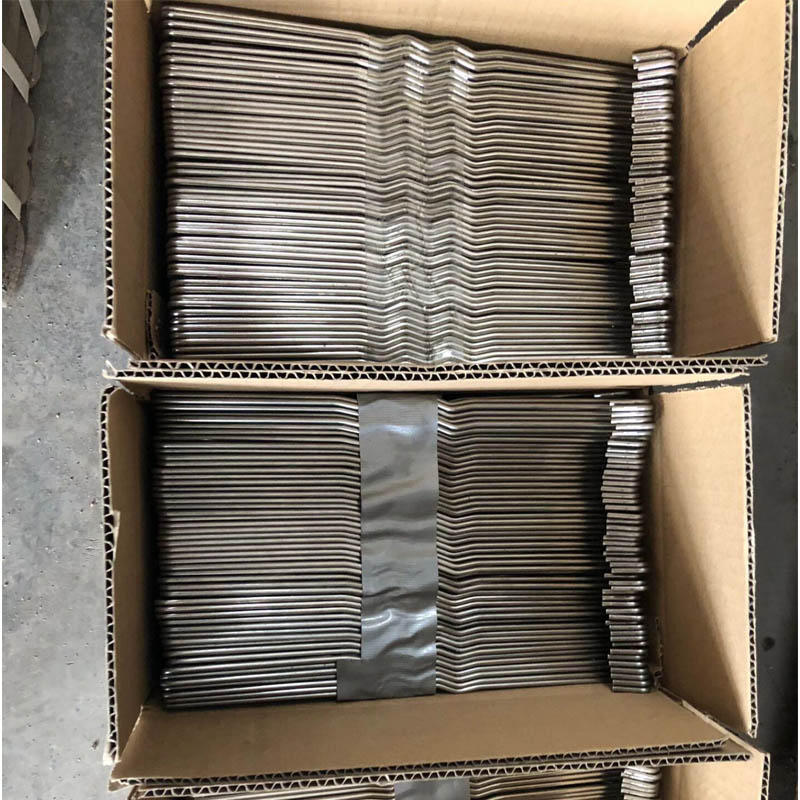
- Mobile Phone
- +8613931874955
- sales@cntcmetal.com
Exploring the Benefits of Wire Wall Ties in Construction and Structural Integrity
Understanding Wire Wall Ties A Crucial Component of Structural Integrity
In the realm of construction and architecture, the importance of structural stability cannot be overstated. Among the various elements contributing to this stability, wire wall ties play a significant role, particularly in the construction of masonry walls. These ties serve as essential connectors between different structural components, ensuring that buildings can withstand various stresses over time. This article delves into the significance, types, and installation practices associated with wire wall ties.
What Are Wire Wall Ties?
Wire wall ties are typically made from stainless steel, galvanized steel, or other corrosion-resistant materials. They function as connectors that link two or more masonry walls together, helping to maintain alignment and support structural integrity. By providing horizontal and vertical stability, wall ties help distribute loads evenly across the structure, which is crucial in preventing structural failure.
The Importance of Wire Wall Ties
1. Structural Stability Wall ties prevent masonry walls from bowing or collapsing under lateral forces, such as wind or seismic activity. By connecting the outer veneer of a wall to its inner structural support, they create a more unified structure that can better handle external pressures.
2. Load Distribution They play a vital role in load distribution. When weight or pressure is applied to a wall, wire ties help distribute this load evenly across the structure. This load distribution is essential for maintaining the integrity of the building over time.
3. Moisture Control Properly installed wall ties can also assist in moisture control by allowing air circulation between walls. This is particularly important in preventing mold growth and decay in buildings, especially in regions with high humidity.
Types of Wire Wall Ties
There are several types of wire wall ties used in construction, each with specific applications
1. Twist Ties These are simple wire ties twisted into a loop and are often used for lighter structures.
wire wall ties

2. Expansion Ties Designed to allow for movement, these ties adjust to changes in temperature and humidity, accommodating the natural expansion and contraction of materials.
3. Brick Ties Commonly used in brick masonry, these ties provide a secure connection between bricks and the backup wall.
4. Dovetail Ties These are often used in concrete masonry applications and are designed to interlock with the concrete blocks to provide added stability.
Installation Practices
Proper installation of wire wall ties is crucial for ensuring their effectiveness. Here are a few key practices to consider
1. Spacing Wall ties should be spaced appropriately, generally at intervals of 16 inches vertically and 24 inches horizontally. Adequate spacing ensures that loads are evenly distributed across the wall.
2. Aligning with Mortar Joints Ties should be installed in alignment with the mortar joints to ensure a tight fit and to minimize the risk of cracking.
3. Use of the Right Type Selecting the appropriate type of wall tie for the specific application is essential. Factors such as wall thickness, type of materials used, and environmental conditions should all be considered.
4. Inspection and Maintenance Regular inspection of wall ties is important to identify any signs of corrosion or damage. Maintenance should be conducted as necessary to ensure that the ties continue to provide support and stability.
Conclusion
Wire wall ties are a fundamental component in masonry construction, providing vital support and stability to structures. Their role in load distribution, moisture control, and overall structural integrity underscores their importance in building projects. By understanding the types of wall ties available, adhering to proper installation practices, and conducting regular inspections, builders and architects can ensure the longevity and safety of their structures. As the construction industry continues to evolve, the principles that guide the use of wire wall ties remain crucial in the pursuit of safe, durable, and resilient buildings.
share:
-
Your Source for Concrete Wall Ties and Masonry AccessoriesNewsJul.10,2025
-
Unlocking the Power of Iron Wire for Every ProjectNewsJul.10,2025
-
Explore Advanced Chain Wire and Stainless Steel Mesh FencingNewsJul.10,2025
-
Discover the Benefits of Annealed Wire ProductsNewsJul.10,2025
-
Discover China Stainless Steel Wire Mesh SolutionsNewsJul.10,2025
-
Build with Confidence Using High-Performance Masonry AccessoriesNewsJul.10,2025
-
Why Sacrificial Formwork Is Redefining Underground ConstructionNewsJun.06,2025



















